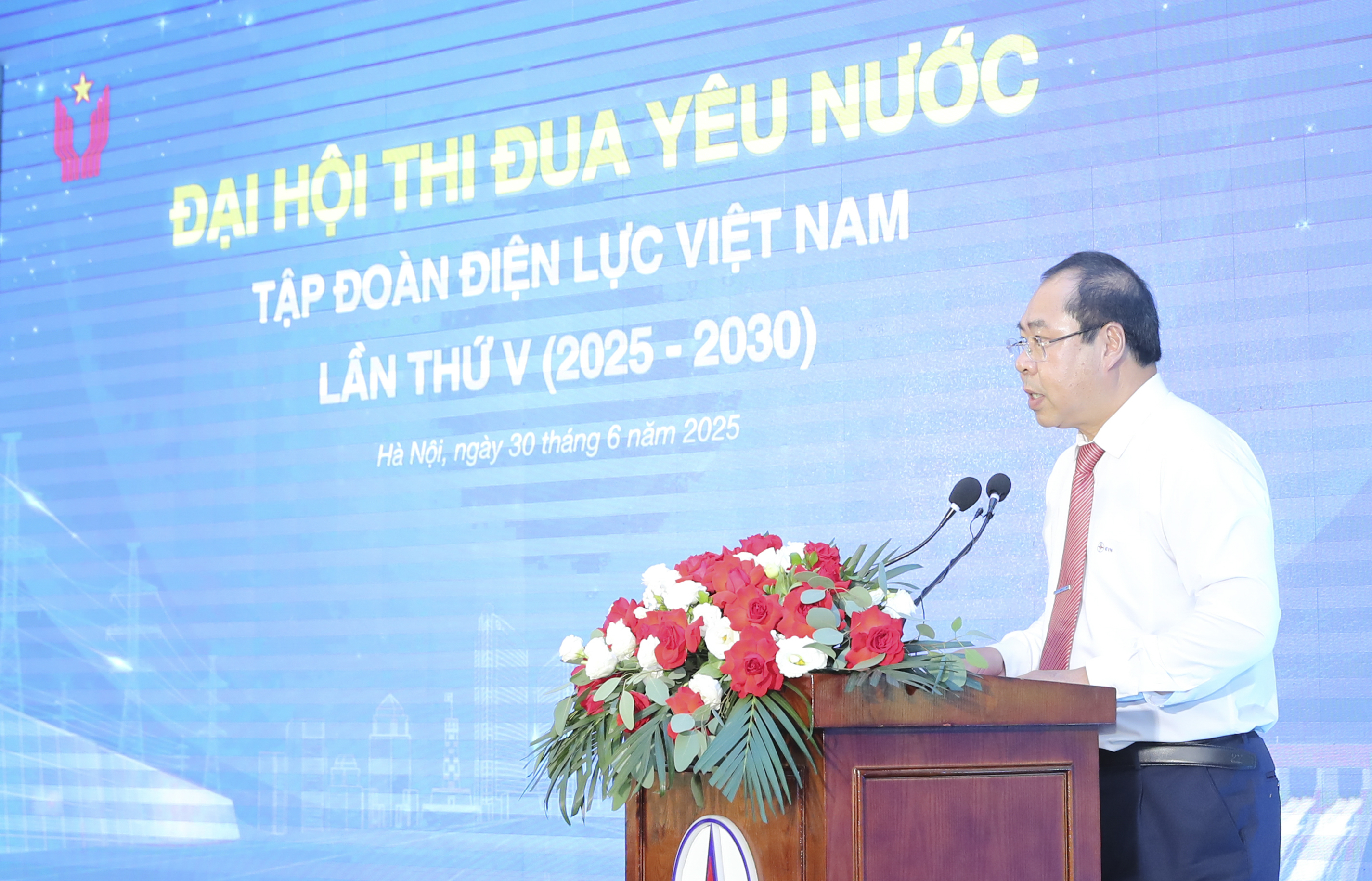First, ensuring a safe, continuous, and stable power supply.
Emulating the safe, stable, and efficient power supply operation for socio-economic development and public demand. Proactively developing power supply scenarios to meet high economic growth targets (double-digit growth) in line with the orientations of the Politburo and the Government, with an average annual growth rate of commercial electricity output ranging from 10.3% to 12.5% during the 2025-2030 period, toward the goal of reaching a total national commercial electricity output of 500.4 to 557.8 billion kWh by 2030, in line with the revised Power Development Plan VIII. Striving to reduce transmission and distribution losses to below 6%, on par with advanced ASEAN countries by 2030.
Second, accelerating investment in power sources and grids as per planning, ensuring synchronization and efficiency.
Creating breakthroughs in the investment of key power source and grid projects in accordance with the revised Power Development Plan VIII; implementing 11 power source projects with a total capacity of over 9,170MW. Prioritizing all resources for the implementation of the Ninh Thuan 1 Nuclear Power Plant Project as directed by the Prime Minister. Focusing on timely completion and energization of key grid projects; ensuring synchronization between sources and grids; enhancing interregional transmission capacity. Researching and applying ultra-high-voltage transmission technologies, direct current (DC) transmission, Back-to-Back systems, and smart grid development; investing in modern information technology (IT) infrastructure to integrate distributed energy sources.
Third, developing a smart, synchronous, modern, and regionally integrated power grid.
Developing a modern grid capable of efficiently integrating renewable energy sources, meeting the N-1 criterion for important load areas and N-2 for critical load areas. By 2030, aiming for power supply reliability to rank among the top 4 in ASEAN and power access index among the top 3 in the region. Enhancing the modernization of transmission and distribution systems, applying advanced technologies, and promoting smart grid and automation in operational management.
Fourth, enhancing corporate governance efficiency, ensuring financial sustainability, and mobilizing sufficient investment capital.
Implementing transparent, efficient corporate governance and streamlining the organizational apparatus; restructuring the organizational model towards clear hierarchical structuring and delegation of authority, accompanied by strict financial control. Finalizing the internal management regulation system for consistency and synchronization across EVN, enhancing autonomy for subordinate units. Striving to maintain profitable operations annually, with a minimum profit of 3% on equity; preserving and increasing State capital invested in EVN and its subsidiaries. Ensuring sufficient capital mobilization for the 2025-2030 development phase and improving investment cost management efficiency.

Mr. Do Duc Hung, Chairman of Vietnam Electricity Trade Union, launching emulation movement to excellently fulfill production and business tasks for 2025-2030 period. Photo: Ngoc Tuan
Fifth, improving customer service quality and business operations.
Finalizing the digital service ecosystem; providing 100% level-4 online electricity services via the National Public Service Portal, the Public Administration Center, and the Public Service Portal of provinces and cities. Increasing the rate of direct power sales and proactively formulating sustainable and efficient power supply plans that optimize economic and service outcomes for customers. Promoting non-cash payments, expanding flexible and convenient payment methods. Enhancing customer experience quality, building a service style that is professional, transparent, modern, and friendly.
Sixth, developing a high-quality workforce and increasing labor productivity.
Aiming for average labor productivity growth of over 8% per year across the Group. Establishing a fair, transparent employee evaluation system based on actual results and capabilities; rejuvenating the workforce and improving the quality of management and leadership personnel. Prioritizing training, attracting, and developing high-quality human resources for key areas such as nuclear power, smart system operations, and digital transformation.
Seventh, achieving breakthroughs in science, technology, innovation, and digital transformation.
Emulating the comprehensive implementation of the Digital Transformation Master Plan, making EVN a digital enterprise before 2028; promoting the "Creative Labor" movement and the "10,000 Initiatives" program across the Group. Establishing dedicated units, investing in key laboratories, and fostering research and application of advanced, global technologies in operations and corporate governance.
Eighth, practicing comprehensive thrift and anti-waste practices in all areas.
Continuing resolute and synchronous implementation of measures for thrift and anti-waste practice in production, business, finance, investment, and cost management; striving to achieve the highest possible performance across all planned targets for the 2025-2030 period; strengthening inspections, audits, and transparency while strictly handling violations causing loss and waste; improving the institutional framework for for preventing and combating wastefulness, enhancing the effectiveness of cash flow control and production and investment cost management; building a culture of thrift as a conscious, routine behavior among every employee; using thrift and anti-waste practice results as a key criterion for performance evaluation, emulation consideration, and commendation of units and leaders.
Ninth, effectively implementing communication, social responsibility, corporate culture, and EVN brand development.
Enhancing the communication activity quality, proactively providing information, fostering positive relationships with the media, diversifying communication forms, and improving the capacity of communication staff. Continuing to promote social responsibility activities aligned with unit capabilities, integrating brand promotion and corporate image building to create positive public influence and convey community-oriented values.
Translator: Thu Hường
Share